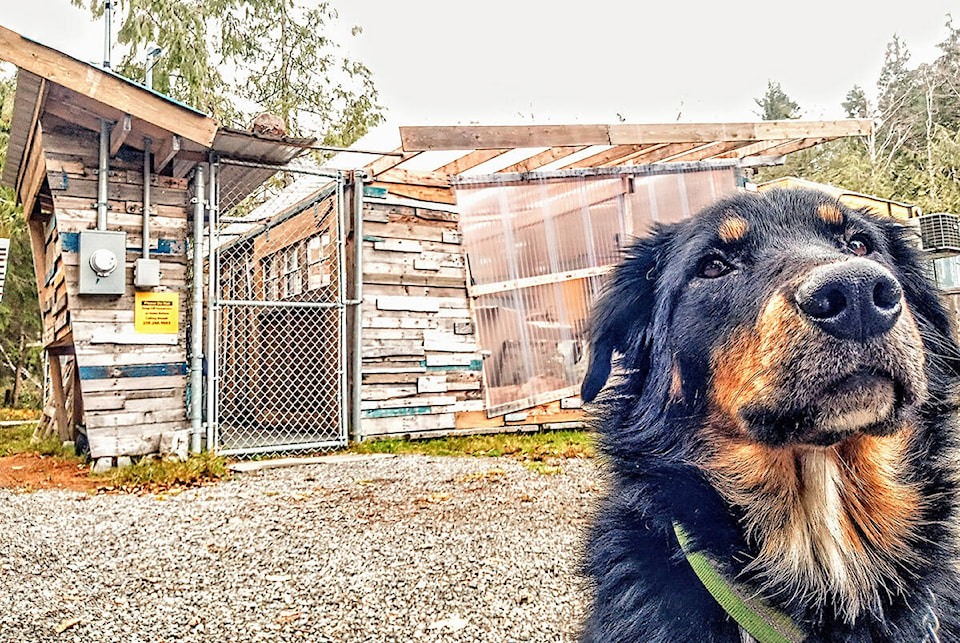Tofino is mulling over a potential new contract to ensure its local pet population is cared for.
The district is considering a $30,000 agreement with the Coastal Animal Rescue and Education Network to find missing pets and safely house stray ones.
“The municipality does not have any kennels, we don’t have additional staff that can look after the animals and the wages are a little bit different. In order to accomplish what the CARE Network is offering, dealing with stray cats and all those types of issues, we would have to hire additional staff,” said Tofino’s fire chief and manager of protective services Brent Baker during last month’s budget meeting.
The agreement would see CARE become the primary contact for animal situations within the district, facilitating and managing dog and cat licensing, kennelling stray and abandoned animals, rehoming animals as needed and providing affordable spay and neutering services.
“We’re really excited about this relationship,” CARE co-founder James Rodgers told the Westerly News.
CARE has been working with animals throughout the West Coast for the past 10 years and established a shelter facility roughly two years ago.
“The amount of volunteer effort that’s gone in to make it happen has been incredible and the effect is that we do have capacity to keep animals there very safe and cozy for a short stay until they either go back home or move on to wherever they need to go to next,” Rodgers said.
He added the shelter has several rooms for dogs and cats and supplements CARE’s foster family network.
“Our number one goal is to keep dogs and cats with their families, so sometimes they just need to come for a short stay, maybe they were found roaming or running down the highway,” he said. “If we can get them back the same day, we’re winning, but hopefully it’s only one night before we can figure out where they live and get them home…In other cases where animals end up with us to be rehomed, they might be with us for a little longer.”
Baker told the Westerly the contract has been discussed for several years and he hopes it will be in place in 2022.
“Ideally, the sooner the better…2022 would be our best case scenario for sure. It would be nice to know that we have resources in place for the upcoming busy season,” he said.
“They are well trained and experienced. This is what they do. They are a dedicated local resource that’s already in place, so it makes sense to go with what’s there instead of recreating the wheel…For me, it’s a logical step. It’s one that can happen fairly quickly and the services are needed.”
Rodgers said CARE worked with over 750 animals in 2020 and continues to get busier as it becomes more well known.
“This all started 10 years ago as a group of neighbours wanting to help animals and our neighbours. It’s always been a neighbour to neighbour concept and really, fundamentally, what this comes down to is this work makes our communities healthier and safer and we are 100 per cent committed to that,” he said. “It’s healthier and safer not only for the four-legged members of our communities and visitors for that matter, but also the humans.”
He suggested lost and stray animals can contribute to wildlife conflicts, noting this year has been “a really sad year” for the West Coast’s black bear population.
“Some folks might not realize, but stray dogs and cats, especially cats, can become attractants for wild animals to come into human populated areas and that’s where we see some of those human-wildlife encounters and conflicts,” he said.
He added lost animals can also be hazards on the highway.
“We get calls way too often about dogs running along the road or the highway, which of course is terrible for the dog, but it’s also terrible for the driver and everyone else that would be impacted if that dog were to get hit,” he said.
“There’s people driving 80-plus (km/h) and there’s a dog right along the centre line…Having somewhere for that dog to go until the guardians can be found, I think, is a critical service. When there isn’t someone local to call, often that animal is out there still in danger and presenting a danger in different ways.”
andrew.bailey@westerlynews.ca
Like us on Facebook and follow us on Twitter
READ MORE: Rescued baby cow becomes spokes-calf for Meares Island herd
READ MORE: Animal rescue team launched in Tofino-Ucluelet
READ MORE: Tofino honours prominent animal advocate with Volunteer Recognition Award
